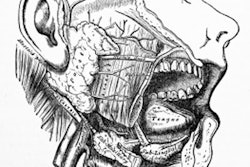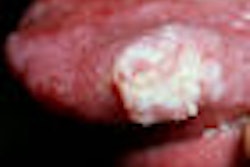
Dental practitioners should not rely solely on clinical impressions when looking at potentially cancerous oral lesions, according to a new study presented at the recent American Association for Dental Research (AADR) meeting in Washington, DC.
In fact, all biopsied tissue should be submitted to a pathologist for microscopic examination, according to researchers from the Virginia Commonwealth University (VCU) School of Dentistry and the Pontifical Catholic University of Rio Grande do Sul (PUCRS) School of Dentistry in Brazil.
“One cannot rely only on clinical judgment in making treatment decisions involving oral lesions.”
— Daniel Laskin, D.D.S., Virginia
Commonwealth University
Their findings were part of a larger study designed to evaluate the accuracy of clinical judgment of general dentists and various specialists, study author Daniel Laskin, D.D.S., professor and chairman emeritus of the VCU Oral and Maxillofacial Surgery Department, told DrBicuspid.com.
He and his colleagues compared the clinical diagnosis of suspect lesions made by dental students and oral and maxillofacial surgery residents with the final diagnosis made by an oral pathologist. This is the first time the ability of dental students and oral and maxillofacial residents to make accurate clinical diagnoses of oral lesions has been studied, they noted.
"The basis for the study was the premise that clinical diagnosis of oral lesions is not always accurate, that malignancies may be misdiagnosed as benign lesions, and that, therefore, all tissue specimens surgically removed should be subjected to histologic examination and diagnosis," Dr. Laskin said.
Study findings
The researchers looked at 1,303 biopsies taken between 2000 and 2008 at PUCRS. A total of 524 specimens were biopsied by dental students (40%) and 779 by residents (60%). The biopsies were classified as soft-tissue, hard-tissue, or combined hard- and soft-tissue lesions. They were then subclassified as neoplastic (benign and malignant), inflammatory, or other (such as normal tissue, dental follicle, or premalignant lesions).
Among the study findings:
- Of the total diagnoses, 1,049 (80.5%) were correct and 254 (19.5%) were misdiagnosed clinically.
- Dental students were more accurate (85%) than residents (77%) in making a correct diagnosis.
- Ameloblastomas, dentigerous cysts, and central giant cell granulomas were most frequently misdiagnosed.
- Malignant lesions were diagnosed more accurately than benign lesions, but 20% of malignancies were still misdiagnosed.
"The clinical misdiagnosis of biopsied lesions by students and residents in a teaching setting would indicate that an even higher error rate may occur in clinical practice," the researchers concluded.
They were surprised that only 80% of the lesions were diagnosed correctly on a clinical basis in a teaching environment involving experienced faculty, Laskin said.
"This is further evidence that one cannot rely only on clinical judgment in making treatment decisions involving oral lesions, which could actually be malignant," he said.
The authors also found it surprising that dental students were more accurate than oral and maxillofacial surgery residents -- until they realized that the students were making their final decisions in conjunction with experienced faculty and hoped that what they learned would be carried over into their practice, Dr. Laskin noted.
"It is very interesting that dental students were more accurate than residents in making a correct diagnosis, [but] this result should be related to the degree of diagnosis because the residents tell the students what to do, and usually only easy (small, benign) lesions are given to the students to perform biopsies," noted Sertan Ergun, D.D.S., Ph.D., who has conducted similar research (International Journal of Oral and Maxillofacial Surgery, December 2009, Vol. 38:12, pp. 1283-1288).
The VCU study also revealed that commonly occurring lesions, such as dentigerous cysts and giant cell granulomas, and the more serious ameloblastomas are most often misdiagnosed, Dr. Laskin said.
"These findings highlight the importance of not relying only on one's clinical diagnosis, without histologic confirmation, because malignant lesions can be misdiagnosed as benign conditions and patients end up with delayed treatment," he added.
The experience of always comparing the clinical and histological diagnosis will make the dentist a better diagnostician in the long run, he concluded.
Copyright © 2010 DrBicuspid.com



















